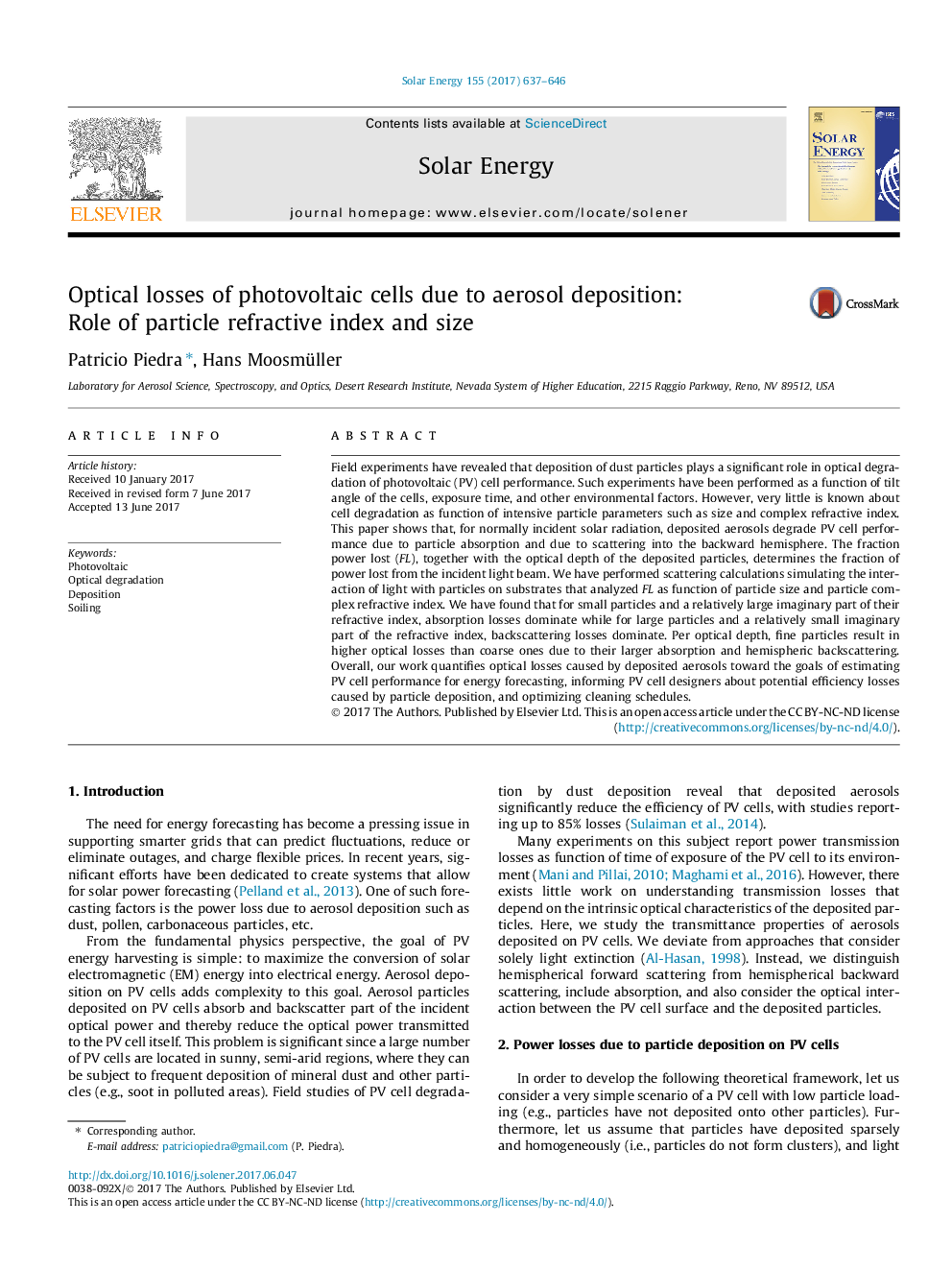| Article ID | Journal | Published Year | Pages | File Type |
|---|---|---|---|---|
| 5450655 | Solar Energy | 2017 | 10 Pages |
Abstract
Field experiments have revealed that deposition of dust particles plays a significant role in optical degradation of photovoltaic (PV) cell performance. Such experiments have been performed as a function of tilt angle of the cells, exposure time, and other environmental factors. However, very little is known about cell degradation as function of intensive particle parameters such as size and complex refractive index. This paper shows that, for normally incident solar radiation, deposited aerosols degrade PV cell performance due to particle absorption and due to scattering into the backward hemisphere. The fraction power lost (FL), together with the optical depth of the deposited particles, determines the fraction of power lost from the incident light beam. We have performed scattering calculations simulating the interaction of light with particles on substrates that analyzed FL as function of particle size and particle complex refractive index. We have found that for small particles and a relatively large imaginary part of their refractive index, absorption losses dominate while for large particles and a relatively small imaginary part of the refractive index, backscattering losses dominate. Per optical depth, fine particles result in higher optical losses than coarse ones due to their larger absorption and hemispheric backscattering. Overall, our work quantifies optical losses caused by deposited aerosols toward the goals of estimating PV cell performance for energy forecasting, informing PV cell designers about potential efficiency losses caused by particle deposition, and optimizing cleaning schedules.
Related Topics
Physical Sciences and Engineering
Energy
Renewable Energy, Sustainability and the Environment
Authors
Patricio Piedra, Hans Moosmüller,
